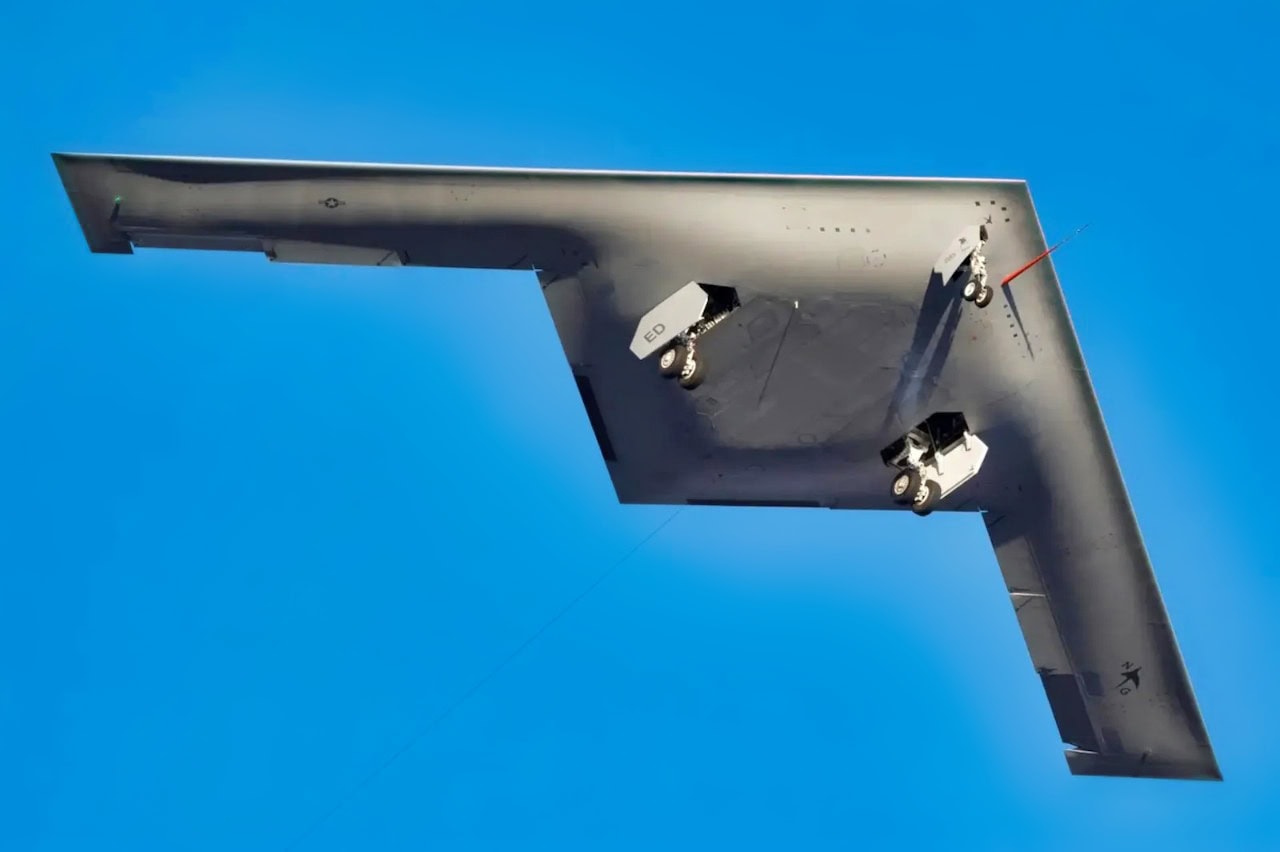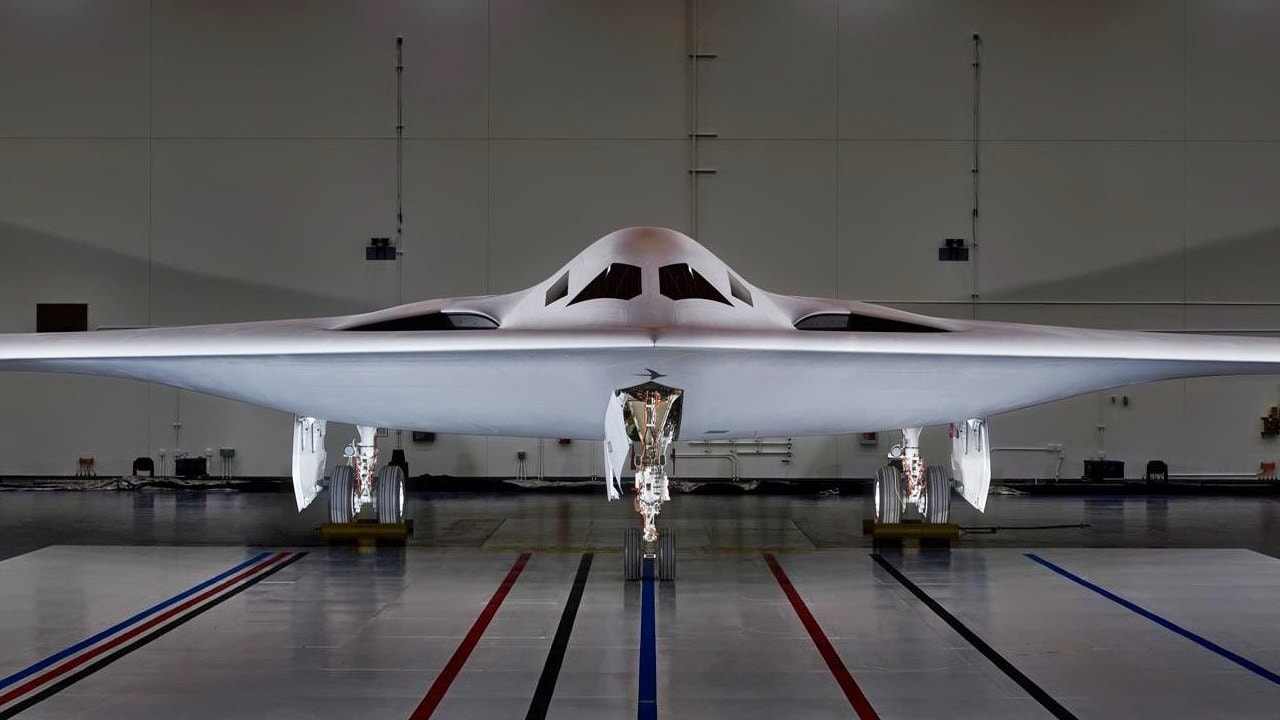The Question: How Many B-21 Raider bombers does the U.S. Air Force need?
The U.S. Air Force has announced that it will purchase at least 100 B-21s from Northrop Grumman. The question is whether that number of the next-generation, flying-wing-design stealth bomber will be enough.

B-21 Raider. Image Credit: Creative Commons.
B-21 Bomber: The Numbers Question
In September 2024, then-Air Force Secretary Frank Kendall approved the second and third basing locations for the B-21 Raider, the latest model of bomber that will enter into the service’s inventory. The bases are to be Whiteman Air Force Base, Missouri, and Dyess Air Force Base, Texas. Ellsworth Air Force Base in South Dakota was previously selected as the first base that will receive the B-21.
The announcement of the new bases brought up the question of just how many B-21s the Air Force would need to staff those facilities at full operational capacity. In October, it was reported that the Air Force was re-evaluating the number of B-21s it would need to meet the service’s requirements in the coming years.
“I think that’s exactly what the Air Force is looking at,” said Northrop Grumman CEO Kathy Warden at the time. “They are undertaking a force structure design review, and the Secretary has been open about looking at the various options they have for increasing their force size and has talked specifically about NGAD. And we know that B-21 is in the [force structure development] mix as well.”
Force Structure Being Reviewed
At the time, the Air Force in the midst of a congressionally-mandated force structure review. The March 21 announcement that Boeing was selected to develop the service’s sixth-generation air superiority fighter program, known as Next-Generation Air Dominance (NGAD), was the first step in determining future force levels.
Now designated the F-47, the new fighter aircraft will be working hand-in-hand with the B-21 as the major components in the different kill chains the Air Force develops to answer various conflict scenarios around the world. In that vein, one of the primary missions for NGAD will be to support the B-21.
When the stealth bomber runs missions, the F-47 will provide an air-superiority element, protecting the Raider by sweeping the skies of enemy aircraft. This will ensure that the B-21 reaches its target, then makes its egress from the target/launch area and returns safely back to home base.
Air Force officials had previously said that a contingent of 100 Raiders meets the service’s current projected requirements. But there are other constituencies within the service that have advocated for building the B-21 in greater numbers.
In the same October 24 call cited above, Warden commented that the size of the B-21 fleet is but one factor considered as part of a broader Air Force requirements review.
The Cost-Savings Factor
The cost of the B-21 is a significant consideration– as it is with any aircraft. At the time of the Warden interview, Kendall had paused the contract down-select for NGAD because of the price per unit of that aircraft. The Secretary had said previously that each NGAD aircraft could cost some $300 million or more.
But in September he said he was looking to pay no more than the unit cost of an F-35—$80 million to $100 million per tail—which is a rather significant reduction. The difference of $300 million vs $100 million per aircraft, spread across a fleet of 200-250 fighters, adds up to potentially tens of billions of dollars in savings.
Those savings could have gone to the B-21. Indeed, Warden made her comments during an earnings call, when asked if NGAD savings could be rerouted to fund more B-21s.
Retired Col. Mark Gunzinger of the Mitchell Institute for Aerospace Studies told Air & Space Forces Magazine that the Air Force will have to structure its force to deter two peer adversaries—Russia and China. More B-21s—with the bombers’ capability to penetrate enemy air defenses, and to be procured at a faster rate—are what he sees as the best path to this objective.
“The most cost-effective way of doing that is to increase the acquisition of B-21 because it’s a two-for-one deal,” Gunzinger said. “It enhances conventional defense, and it enhances nuclear deterrence.”
About the Author: Reuben F. Johnson
Reuben F. Johnson is a survivor of the February 2022 Russian invasion of Ukraine and is now an Expert on Foreign Military Affairs with the Fundacja im. Kazimierza Pułaskiego in Warsaw. He has been a consultant to the Pentagon, several NATO governments and the Australian government in the fields of defense technology and weapon systems design. Over the past 30 years he has resided in and reported from Russia, Ukraine, Poland, Brazil, the People’s Republic of China and Australia.

